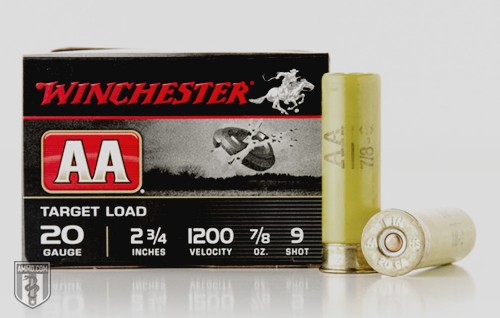#9 Lead Shot Ammo: #9 Lead Shot Explained
 #9 lead shot is the most popular pure skeet shooting round you’re going to find. This shot has the high pellet count and range to take down skeet discs, even when launched simultaneously and at a high rate of speed – making it a popular choice for the Olympic Games (with lead being used almost exclusively).
#9 lead shot is the most popular pure skeet shooting round you’re going to find. This shot has the high pellet count and range to take down skeet discs, even when launched simultaneously and at a high rate of speed – making it a popular choice for the Olympic Games (with lead being used almost exclusively).
In some regions, #9 is used as small bird or squirrel hunting ammo, but people tend to have mixed feelings about this. Hand loaders use #9 as a filler for larger pellets, such as #7.5 shot, to increase their ability to take down mid-sized birds or quick little varmints. Find this shot in 12 gauge, 20 gauge and more.
Clay Shooting
Some people confuse skeet with trap and clay shooting, which is understandable due to their similarities. The main way to help understand skeet shooting, is to visualize these three sports and know their differences:
- Sporting Clays: This has various stations on a course, and at each station, the clays are launched in a specific fashion to emulate animals. There may be a “rabbit” station where they bounce along the ground and a “duck” station where they sail over a body of water, etc. This can be compared to golfing with a shotgun, depending on the course.
- Trap: Trap shooting launches the clays away from your position, about 10 to 20 yards in front of you (competitive shooters use the 16-yard marker). There are normal straight-flying traps and more difficult wobble traps where the clays are thrown at random angles.
- Skeet: Skeet is launched from towers on your left, right and sometimes in front of you. Although, they tend to only go from right to left and left to right. This is probably the most commonly known type of clay shooting, due to its popularity on television and even video games. In the 80s, sports bars often had skeet shooting arcade games.
Olympic Use
This round has been one of the preferred and mandatory shot sizes since the late 1960s, when skeet shooting became a legitimate Olympic sporting event. You can find skeet clubs in most major cities as well as smaller cities where outdoor sports and firearms-based events are popular. It can be very thrilling to unload your #9 shot into clays, and is a great way to meet people with similar interests in firearms.
Other Uses
#9 is fairly well developed for breaking discs. But since it has so many pellets, it also makes for a great snake shot or small bird shot. You won’t want to shoot anything larger than maybe a pigeon from 20 yards, as it won’t have the power to kill. If your goal is ducks or garden pests, you’ll definitely want to go up to a #6 shot or maybe a #7 steel shot to make sure you take care of them the first time.
Shotgun Projectiles
- #12 Lead Shot Ammo
- #9 Lead Shot Ammo
- #8.5 Lead Shot Ammo
- #8 Lead Shot Ammo
- #7.5 Lead Shot Ammo
- #7 Steel Shot Ammo
- #6 Lead Shot Ammo
- #6 Steel Shot Ammo
- #5 Lead Shot Ammo
- #5 Nickel-Plated Lead Shot Ammo
- #4 Lead Shot Ammo
- #3 Steel Shot Ammo
- #2 Steel Shot Ammo
- #4 Buck Ammo
- #3 Buck Ammo
- #1 Buck Ammo
- #1 Buck Rubber
- #0 Buck Ammo
- #00 Buck Ammo
- #000 Buck Ammo
- .4 Buck Ammo
- Rifled Slugs
- Sabot Slugs
